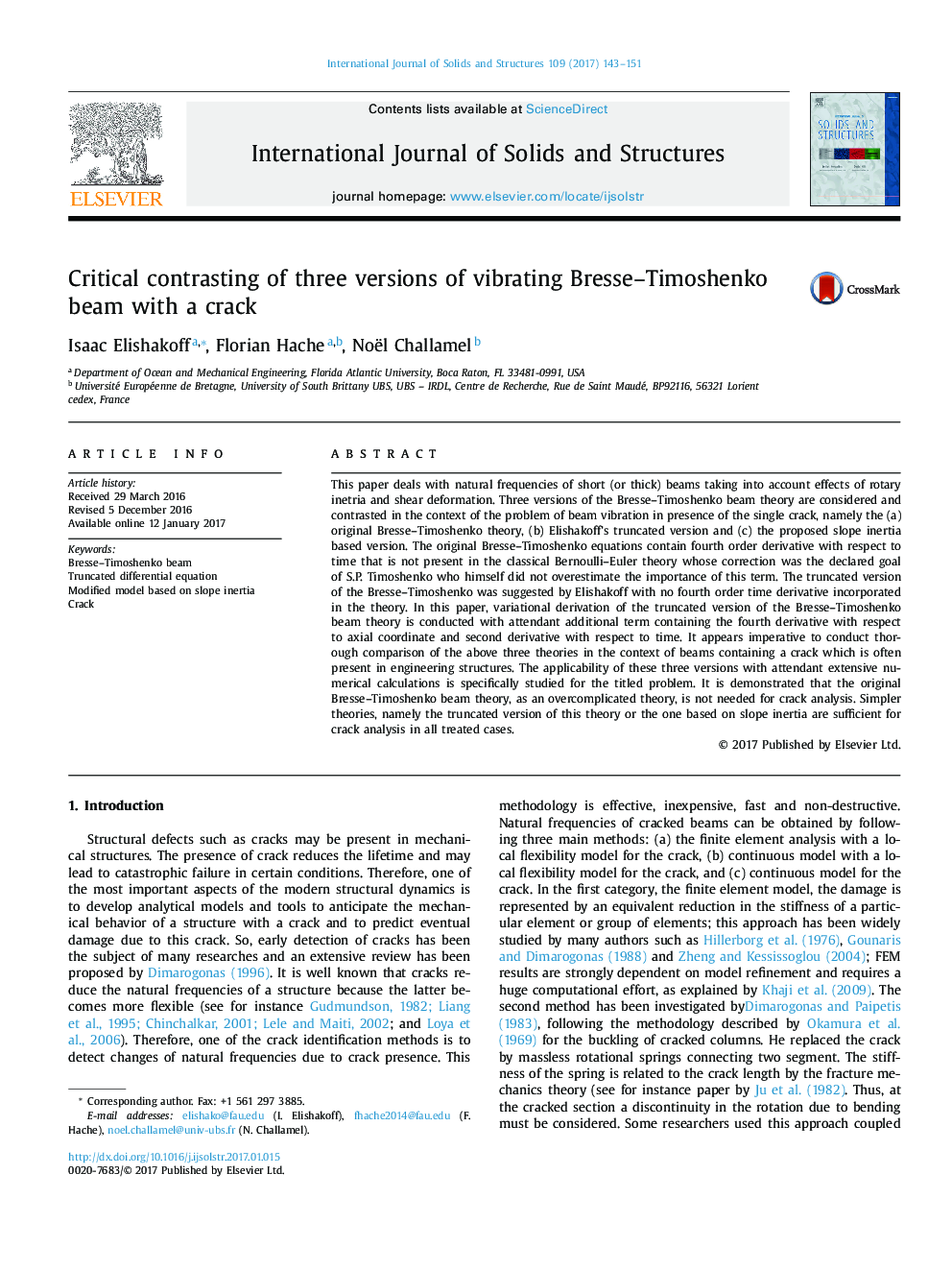| کد مقاله | کد نشریه | سال انتشار | مقاله انگلیسی | نسخه تمام متن |
|---|---|---|---|---|
| 4922609 | 1430190 | 2017 | 9 صفحه PDF | دانلود رایگان |
عنوان انگلیسی مقاله ISI
Critical contrasting of three versions of vibrating Bresse-Timoshenko beam with a crack
دانلود مقاله + سفارش ترجمه
دانلود مقاله ISI انگلیسی
رایگان برای ایرانیان
کلمات کلیدی
موضوعات مرتبط
مهندسی و علوم پایه
سایر رشته های مهندسی
مهندسی عمران و سازه
پیش نمایش صفحه اول مقاله

چکیده انگلیسی
This paper deals with natural frequencies of short (or thick) beams taking into account effects of rotary inetria and shear deformation. Three versions of the Bresse-Timoshenko beam theory are considered and contrasted in the context of the problem of beam vibration in presence of the single crack, namely the (a) original Bresse-Timoshenko theory, (b) Elishakoff's truncated version and (c) the proposed slope inertia based version. The original Bresse-Timoshenko equations contain fourth order derivative with respect to time that is not present in the classical Bernoulli-Euler theory whose correction was the declared goal of S.P. Timoshenko who himself did not overestimate the importance of this term. The truncated version of the Bresse-Timoshenko was suggested by Elishakoff with no fourth order time derivative incorporated in the theory. In this paper, variational derivation of the truncated version of the Bresse-Timoshenko beam theory is conducted with attendant additional term containing the fourth derivative with respect to axial coordinate and second derivative with respect to time. It appears imperative to conduct thorough comparison of the above three theories in the context of beams containing a crack which is often present in engineering structures. The applicability of these three versions with attendant extensive numerical calculations is specifically studied for the titled problem. It is demonstrated that the original Bresse-Timoshenko beam theory, as an overcomplicated theory, is not needed for crack analysis. Simpler theories, namely the truncated version of this theory or the one based on slope inertia are sufficient for crack analysis in all treated cases.
ناشر
Database: Elsevier - ScienceDirect (ساینس دایرکت)
Journal: International Journal of Solids and Structures - Volume 109, 15 March 2017, Pages 143-151
Journal: International Journal of Solids and Structures - Volume 109, 15 March 2017, Pages 143-151
نویسندگان
Isaac Elishakoff, Florian Hache, Noël Challamel,